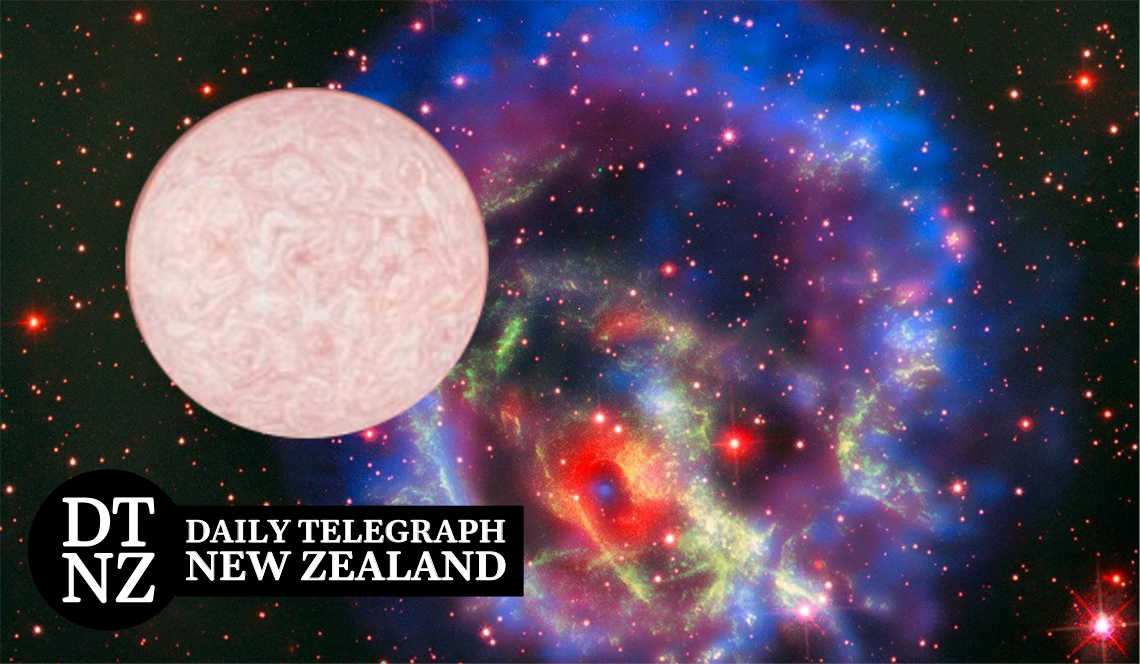Most of the stars in the Universe are caught up in galaxies, separated by vast distances called intergalactic space, where only the occasional solitary stars can be found.
Astronomers believe that a mysterious neat circle emanating radio waves, called J0624–6948 and discovered near the Large Magellanic Cloud (LMC), a satellite galaxy of the Milky Way, is evidence of the death of a lone rogue star.

The discovery, outlined in a paper published in the Monthly Notices of the Royal Astronomical Society, came after scientists had been studying several intriguing, radio-emitting space circles, named Odd Radio Circles, or ORCs, first discovered using one of the world’s most powerful radio telescopes, the Australian Square Kilometre Array Pathfinder (ASKAP).
ORCs, that mostly have a galaxy at their centre and are believed to be the result of an energetic process in those galaxies, have been detected in radio wavelengths, but not by optical or X-ray telescopes.
“When we originally discovered this almost perfectly circular radio object we thought it was yet another ORC… But after our additional observations, it became clear that this object is much more likely to be something else,” said astronomer Miroslav Filipovic from the University of Western Sydney in Australia.
ORCs, which scientists have determined to be spheres, appear as circles because of perspective.
J0624–6948’s lack of an obvious central galaxy sets it apart from previously detected ORCs. In other key differences, the spectral index of the radio emission in the case of J0624–6948 is flatter than that of ORCs. Furthermore, the recently discovered Odd Radio Circle is larger.
Miroslav Filipovic and his colleagues looked into various theories, such as that J0624–6948 was simply a much larger ORC. Another one was that it was a super-flare originating in a star near the galactic center, or jets from a distant active supermassive black hole.
Eventually, only one theory was deemed consistent with the phenomenon they had observed.
“The most plausible explanation is that the object is an intergalactic Supernova Remnant due to an exploded star that resided in the Large Magellanic Cloud outskirts that had undergone a single-degenerate type Ia supernova which involves the explosion of two stars orbiting each other,” said Filipovic, adding:
“What we’ve potentially then discovered is a unique remnant of [a] supernova that has expanded into a rarefied, intergalactic environment – an environment that we didn’t expect to find in such an object. Our estimates point to the age of about 2,200 to 7,100 years old.”
J0624–6948 could be the first intergalactic supernova remnant ever identified. According to the study, an association with the Large Magellanic Cloud would make J0624–6948 around 155 light-years across.
There is a need for follow-up observations with instruments such as ASKAP and its South African counterpart MeerKAT, underscore the scientists.
“These new radio telescopes can pick up a range of spherical objects. Due to the combined effects of high-sensitivity, good spatial sampling, and wide area coverage, they are enriching our understanding of the Universe,” concluded Miroslav Filipovic.